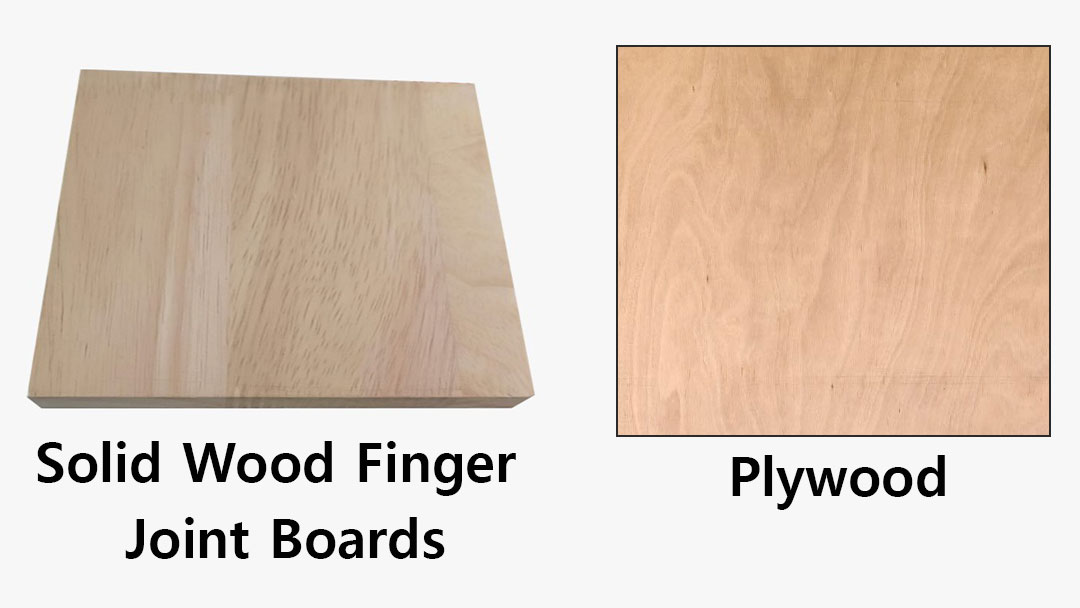
Plywood and solid wood finger joint boards are both types of engineered wood products commonly used in construction and woodworking projects. While they share similarities, there are distinct differences between the two:
Plywood: Plywood is made by gluing together several layers of thin wood planks, each layer placed perpendicular to the adjacent layer. This cross-grain construction increases strength, stability, and resistance to warping.
Solid Wood Finger Joint Boards: Finger joint boards are made by joining small pieces of solid wood using interlocking finger joints. This process produces long and wide boards with consistent wood grain.
Plywood: Plywood can be made from various types of wood, including hardwoods, softwoods, or a combination of both. The quality and durability of plywood depend on the wood species used and the manufacturing process.
Solid Wood Finger Joint Boards: Finger joint boards are typically made from solid wood, often using hardwood species such as oak, maple or pine. Small pieces are carefully machined and joined together to form long boards.
Plywood: Plywood is known for its high strength and dimensional stability due to its layered construction. The cross-grain arrangement helps resist the wood's natural tendency to expand or contract with changes in moisture content, reducing warping and splitting.
Solid Wood Finger Joint Boards: Finger joint boards also have good strength and stability. Interlocking finger joints add strength to the joints, allowing for longer and wider boards without sacrificing stability.
Plywood: Plywood often has a uniform and consistent appearance, with many stacked layers appearing along the edges. Face and back veneers can vary in quality, grade and finish, affecting overall visual appeal.
Solid Wood Finger Joint Boards: Finger joint boards maintain the same wood grain pattern as solid wood. They offer a more traditional and natural look, with visible leg joints adding to the overall look.
Plywood: Plywood is widely used in various applications such as furniture, cabinetry, flooring, roofing, and structural sheathing. It is versatile and available in different thicknesses and grades to suit specific needs.
Solid Wood Finger Joint Boards: Finger joint boards are commonly used for applications where solid wood aesthetics and greater length are required. They often work in furniture making, interior trim, molding, and decorative projects.
In summary, although both plywood and Solid wood finger joint boards are used, plywood provides enhanced strength and stability due to its layered construction, while finger joint boards provide a more natural and continuous wood grain appearance. The choice between them depends on the specific requirements of the project, including strength, aesthetics, and budget.